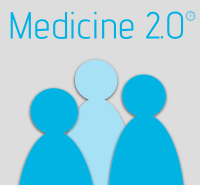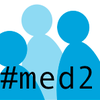Hesitative Introduction of E-mail consultations in General Practice
|
If you are the presenter of this abstract (or if you cite this abstract in a talk or on a poster), please show the QR code in your slide or poster (QR code contains this URL). |
Abstract
Introduction
The Dutch Council for Public Health and Health Care reported in 2005 that 70% of internet users would want to have the opportunity to consult their own general practitioner by e-mail [1]. Since January 1, 2006, general practitioners in the Netherlands are reimbursed 4.50 euro for e-mail consultations, on the condition that it does not concern a new health problem and that it substitutes for a normal practice consultation. In this presentation we will investigate how many doctors and patients actually use e-mail consultations; whether the health problems presented in e-consultations differ from normal practice consultations; and to what extent patients who use e-consultations are different in terms of, age, gender and frequency of use of GP services.
Methods
Data are derived from routine electronic medical records of 100 GP practices that participate in the Netherlands Information Network of General Practice (LINH) [2]. The dataset comprises all 1.902.902 contacts of all 271.509 patients listed in these practices in 2006. For each contact the dataset holds information on type of contact; patient age and gender, prescribed drugs, referrals, as well as diagnosis information. Diagnoses are recorded using the International Classification of Primary Care (ICPC) coding system.
Results
E-mail consultations were claimed at least once in about 30% of the practices involved. Health centers were overrepresented as compared with single handed practices. In most practices the number of consulations was less than 25 in the whole study period, but there were also some enthousiasts: three practices were responsible for almost 50% of all 1159 e-consultations that were claimed. These consultations pertained to 777 patients. For most patients (74%) an e-mail consultation was claimed only once.
Taking into account the fact that women use more GP services in general, more men than women were users of e-consultations. Among users of of e-mail consultations people aged 25 - 44 years are overrepresented.
In a relatively large number of e-mail consultations (73%) no diagnosis was recorded. Where this information was available, metabolic diseases such as diabetes, pregnancy etc and diseases/complaints of the male reproductive system were recorded more often than in normal practice consultations. Cardiovascular problems and respiratory problems seemed to be less suitable for e-mail consultations.
Among users of e-mail consultations, the contactfrequency for the GP is 65% higher than among other people who consulted their GP in the study period. Relatively many users of e-consultations, had a normal consultation in the days before and after the e-consultation.
Conclusion
Though many people seem to be interested in e-consultations, still very few are people using it. In relative terms, e-mail consultations are used more often by men than women and by people aged 25-44. The fact that e-consultations are more often used by frequent attenders suggests that e-consultations are a particularly interesting option for those who have a close relation with their GP. Additional results for 2007 will be presented at the conference.
[1] AJG Van der Rijen. Internetgebruiker en Veranderingen in de Zorg. Zoetermeer, Raad voor de Volksgezondheid en Zorg, 2005.
[2] Verheij RA, et al. Netherlands Information Network of General Practice. NIVEL/WOK. 2008-05-02. URL:http://www.nivel.nl/linh/. Accessed: 2008-05-02. (Archived by WebCite® at http://www.webcitation.org/5XVf8Yx9M)
The Dutch Council for Public Health and Health Care reported in 2005 that 70% of internet users would want to have the opportunity to consult their own general practitioner by e-mail [1]. Since January 1, 2006, general practitioners in the Netherlands are reimbursed 4.50 euro for e-mail consultations, on the condition that it does not concern a new health problem and that it substitutes for a normal practice consultation. In this presentation we will investigate how many doctors and patients actually use e-mail consultations; whether the health problems presented in e-consultations differ from normal practice consultations; and to what extent patients who use e-consultations are different in terms of, age, gender and frequency of use of GP services.
Methods
Data are derived from routine electronic medical records of 100 GP practices that participate in the Netherlands Information Network of General Practice (LINH) [2]. The dataset comprises all 1.902.902 contacts of all 271.509 patients listed in these practices in 2006. For each contact the dataset holds information on type of contact; patient age and gender, prescribed drugs, referrals, as well as diagnosis information. Diagnoses are recorded using the International Classification of Primary Care (ICPC) coding system.
Results
E-mail consultations were claimed at least once in about 30% of the practices involved. Health centers were overrepresented as compared with single handed practices. In most practices the number of consulations was less than 25 in the whole study period, but there were also some enthousiasts: three practices were responsible for almost 50% of all 1159 e-consultations that were claimed. These consultations pertained to 777 patients. For most patients (74%) an e-mail consultation was claimed only once.
Taking into account the fact that women use more GP services in general, more men than women were users of e-consultations. Among users of of e-mail consultations people aged 25 - 44 years are overrepresented.
In a relatively large number of e-mail consultations (73%) no diagnosis was recorded. Where this information was available, metabolic diseases such as diabetes, pregnancy etc and diseases/complaints of the male reproductive system were recorded more often than in normal practice consultations. Cardiovascular problems and respiratory problems seemed to be less suitable for e-mail consultations.
Among users of e-mail consultations, the contactfrequency for the GP is 65% higher than among other people who consulted their GP in the study period. Relatively many users of e-consultations, had a normal consultation in the days before and after the e-consultation.
Conclusion
Though many people seem to be interested in e-consultations, still very few are people using it. In relative terms, e-mail consultations are used more often by men than women and by people aged 25-44. The fact that e-consultations are more often used by frequent attenders suggests that e-consultations are a particularly interesting option for those who have a close relation with their GP. Additional results for 2007 will be presented at the conference.
[1] AJG Van der Rijen. Internetgebruiker en Veranderingen in de Zorg. Zoetermeer, Raad voor de Volksgezondheid en Zorg, 2005.
[2] Verheij RA, et al. Netherlands Information Network of General Practice. NIVEL/WOK. 2008-05-02. URL:http://www.nivel.nl/linh/. Accessed: 2008-05-02. (Archived by WebCite® at http://www.webcitation.org/5XVf8Yx9M)

Medicine 2.0® is happy to support and promote other conferences and workshops in this area. Contact us to produce, disseminate and promote your conference or workshop under this label and in this event series. In addition, we are always looking for hosts of future World Congresses. Medicine 2.0® is a registered trademark of JMIR Publications Inc., the leading academic ehealth publisher.

This work is licensed under a Creative Commons Attribution 3.0 License.




